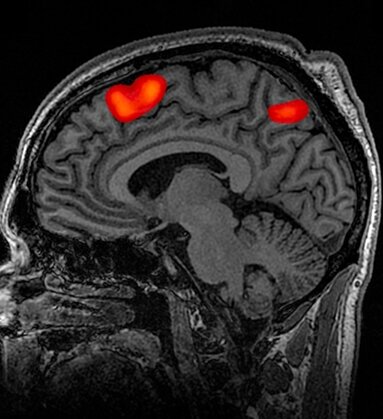The neurobiological origins of pedophilia

Although many within the scientific community believe that pedophilia has its origins in the brain, the neurobiological underpinnings of the disorder are still very unclear. It is hoped, however, that technologies that allow for the observation of brain activity in real-time, like positron-emission tomography (PET) and functional magnetic resonance imaging (fMRI), will provide us with more information about potential abnormalities in the brains of pedophiles (for more about these neuroimaging methods see this article).
There do appear to be distinct patterns of brain activity that correspond to sexual attraction/arousal (in all people, not just pedophiles). When someone views a sexually arousing picture or video, the individual first engages in a process of cognitive appraisal, perhaps to determine if the stimulus is something that it is appropriate to be attracted to. This process is accompanied by activity in the orbitofrontal cortex, a region of the frontal cortex thought to be important in decision-making and impulse control. The individual will likely experience some level of emotion during the ensuing arousal, and this is correlated with activity in structures of the limbic system, such as the cingulate cortex. If the stimulus is found to be desirable, the person will experience increased motivation to pursue it. This will likely enhance activity in areas like the nucleus accumbens, which is involved in motivation and reward. Finally, the individual will also experience autonomic arousal (e.g. increased heart rate, genital arousal), which is associated with stimulation of the hypothalamus.
Some have hypothesized that, in pedophiles, there is a processing problem that occurs with the cognitive component of sexual arousal. While the orbitofrontal cortex may be involved in categorizing a sexual stimulus as appropriate for sexual pursuit, studies with pedophiles have indicated that there is less activation in the orbitofrontal cortex when they are exposed to a sexual stimulus than is seen in non-pedophiles (also known as teleiophiles). Thus, perhaps reduced activity in the orbitofrontal cortex represents a failure to inhibit an impulsive attraction toward someone a teleiophile would recognize as an inappropriate object of attraction. However, this hypothesis does not explain why some pedophiles fixate their attraction on children alone, not finding adult partners to be as desirable.
In a study recently published in Biology Letters, a group of researchers used fMRI to examine brain activity in pedophiles in response to simply viewing pictures of child and adult faces. They compared this brain activity to that of heterosexual and homosexual teleiophiles as they looked at the same pictures. They found that teleiophiles and pedophiles showed distinctive patterns of brain activation in response to the faces that they deemed sexually attractive. The network of areas activated included areas known to be stimulated during facial processing, like the fusiform gyrus, and areas known to be activated during sexual arousal, like the putamen.
The researchers didn't find any differences in the brain regions activated in pedophilic and teleiophilic individuals, just differences in what they were activated in response to. In pedophiles, the network was stimulated in response to immature faces, while in teleiophiles it was activated in response to mature faces. Thus, the authors suggest the network they saw activity in represents a group of brain regions involved in detecting attractiveness as well as maturity.
This study, however, doesn't provide us with any information about what is different in the brains of pedophiles. It tells us that pedophiles and teleiophiles use the same brain regions in mediating their attraction to subjects of different ages. Why the aberrant attraction occurs in the first place is still something that will need to be explored in future studies.
Ponseti, J., Granert, O., van Eimeren, T., Jansen, O., Wolff, S., Beier, K., Deuschl, G., Bosinski, H., & Siebner, H. (2014). Human face processing is tuned to sexual age preferences Biology Letters, 10 (5), 20140200-20140200 DOI: 10.1098/rsbl.2014.0200

